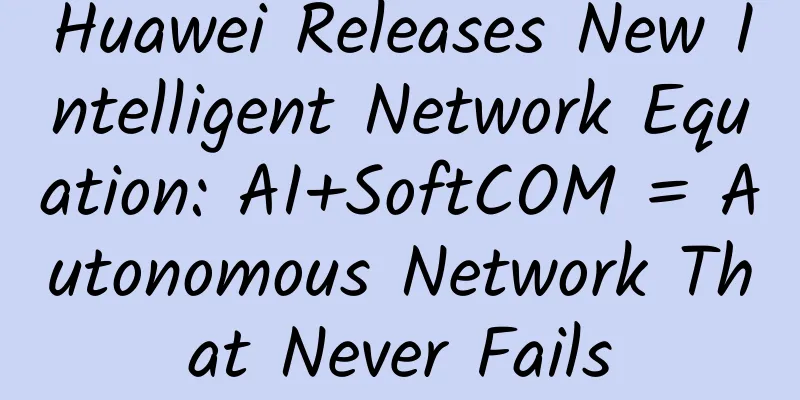How to quickly develop killer applications? Which will have a greater impact on the market, 5G or edge computing?

|
Is edge computing the first new trend in the 5G era? Do you know why the development of 5G is inseparable from edge computing? 5G brings a leap in data transmission speed, and edge computing is expected to benefit Analyzing the core network behind 5G, how can we do without network slicing and edge computing? … Edge computing is strengthening its integration with 5G. This article will explore its reality. What is edge computing? Edge computing, cloud computing, fog computing, and even haze computing are all professional terms that sound a bit unfamiliar, but they can essentially be classified. Image source: IntelligentThings The most familiar cloud computing is the farthest away from the device terminal, but it is more centralized and centralized. Because of its elastic management capabilities in the computing, network, storage and other resource layers and application layers, it is described as the indispensable "water, electricity and gas" in the technological era. In China, Internet companies such as Alibaba Cloud, Tencent Cloud, and Kingsoft Cloud occupy most of the market share of the cloud computing public cloud market. Fog computing was proposed by Cisco. By adding some small servers, routers or other network components with storage between the terminal and the cloud data center, an intermediate layer with data processing and storage capabilities is formed. It can cover the edge network and can also be extended to the core network. Edge computing refers to computing close to the source of things, data and actions. The computing carrier can be an IoT terminal with special processing capabilities, a gateway or router with certain computing capabilities, or a server with strong computing capabilities deployed on the side of the scene.
In the above picture we can also see mobile edge computing (MEC) and mobile cloud computing (MCC). The characteristic of MEC is that computing is moved down to the vicinity of the wireless access network (base station), and the services and cloud computing functions required by mobile terminals are provided nearby through the wireless access network. Telecom operators and equipment manufacturers are the most important leading forces. MCC is currently unpopular and advocates the deployment of some lightweight cloud servers outside of mobile devices to support remote execution of mobile applications close to end users. It can be seen that operators, equipment manufacturers, Internet companies, and many other types of companies are all investing and conducting research around computing, and most forms of computing are moving towards the "edge." Why does 5G use edge computing? In order to make the entire industry understand the edge, Huawei came up with the "octopus" metaphor. As one of the most intelligent invertebrates, the octopus has a huge number of neurons, 40% of which are in the brain and the remaining 60% are distributed in the eight legs (tentacles). With this structure, the octopus forms a distributed computing mechanism of "multiple cerebellums + one brain" when hunting, which improves the sensitivity of its activities. Edge computing is similar to this. The collected data is processed locally on the edge side instead of being uploaded to the cloud computing center, thereby improving real-time performance and effectiveness, reducing the processing pressure and cost of the center.
Especially in the 5G era, although there is no "killer" application related to 5G yet, looking back at the three mainstream application scenarios, each of them generates massive amounts of data and has more or less requirements for low latency. Enhanced Mobile Broadband (eMBB), for consumer Internet scenarios such as VR, AR, 4K/8K HD live broadcast, and cloud gaming; Ultra-Reliable Low Latency (uRLLC), for special application scenarios in IoT vertical industries such as autonomous driving and industrial Internet; Massive Machine Type Communications (mMTC) is aimed at IoT application scenarios such as smart manhole covers and smart water and electricity meters that aim at sensing and data collection. What is even more worth looking forward to is that with the advancement of the edge, artificial intelligence technology that originally needed to run in the cloud can be moved down to the edge to create greater application value. What are the entry positions for edge computing? The dispute over the margins began around 2015. That year, cloud computing vendors began to focus on CDN, and a price war broke out for three years, which affected a large number of traditional CDN vendors. Source: "20180312-Huachuang Securities-Communication Industry Weekly Report: Has the two-year fierce price war in CDN hit the bottom?" As can be seen from the figure, the price of CDN dropped significantly in 2016 and 2017, directly decreasing by 20%. But in fact, CDN is mainly content caching, which is static and non-real-time; edge computing is function caching, which is dynamic and real-time. Today's edge computing emphasizes putting computing at the edge, which is different from the concept of CDN. The three major application scenarios in the 5G era have different requirements for network performance. In order to control costs, meet more demands, or seize new opportunities, various technology companies have begun to emphasize the research on edge computing from different angles. Recent News Events Key Point 1: Which companies are working on edge computing? Overall, industry alliances, core research institutions, chip manufacturers, telecom equipment vendors, telecom operators, software and hardware service providers, and third-party application and content providers are all actively endorsing edge computing. 1) Telecom operators Telecom operators are eager to make a comeback in the 5G era, get rid of the label of "plumbers" and gain application value. They hope to use the least capital investment to produce the richest network functions and achieve identity upgrades. As mentioned above, only telecom operators have the ability to deploy edge computing on the wireless access network side. Other companies always develop edge computing after mobile communication networks. In addition, the characteristics of distributed nodes in edge computing have given operators who already have basic networks across the country a head start. Such advantages have further promoted operators' attention to edge computing. Mobile communication network, including wireless access network, bearer network and core network. (Image source: Xianzao Classroom) 2) Cloud computing vendors For cloud computing vendors, edge computing is an extension of cloud computing. Before 5G became popular, the industry was more discussing whether edge computing would replace cloud computing. Last year, mainstream cloud computing companies began to announce their transformation to industrial Internet and promote the digital economy. Industry analysts believe that the logic behind cloud computing vendors' promotion of edge computing is to clarify the development space of cloud computing and attract more customers, which is a top-down business evolution. 3) Hardware equipment manufacturers/chip manufacturers For example, Google launched the hardware chip Edge TPU, Intel launched the Xeon D-2100 processor chip, and there are also common smart security devices that integrate image recognition, smart gateways that integrate AI algorithms, and so on. Hardware vendors are paying as much attention to edge computing as cloud computing vendors. At the hardware level, whether it is general level or vertical industry field, edge computing is attracting a large number of companies to join, which is another major development trend. 4) Traditional CDN vendors As discussed earlier, CDN was once considered a form of edge computing, so it seems to be a high barrier for CDN vendors to expand their business scope to edge computing. However, after experiencing severe damage from price wars, in order to break through the encirclement of competitors such as cloud computing vendors and telecom operators and successfully seize the dividends of 5G and edge computing to create the next glory, more strategies and energy will be needed in actual operations. Key point 2: Is there any breakthrough in edge computing at present? Among the three major 5G scenarios, low-latency connected cars and autonomous driving require edge computing. Public security cameras throughout smart cities also require edge computing because of the need to process massive data. There are also some typical scenarios such as smart manufacturing and smart medical care. The reason why we can understand and list them is that it reflects the gradual clarification of edge computing application scenarios, which was not available a few years ago and is also a major breakthrough in edge computing.
Public security cameras throughout the city In the future, it will inevitably go through a long period of technological evolution, standard discussion, and joint progress in software and hardware levels, and then produce true killer applications. As you can imagine, this is actually the common goal of 5G technology and edge computing. In the future, edge computing may no longer be used only in certain vertical industries, but will become a new-era infrastructure and basic capability like 5G, promoting the mature implementation of more applications. |
>>: Servers are attacked for nothing? It’s because the high-defense system is not well-prepared
Recommend
The latest market analysis shows that Bluetooth is becoming an important driving force in the IoT industry
As early as several years ago, major market resea...
Why 5G Private Networks Are Critical to Enterprise Digital Transformation
Today’s enterprise manufacturing facilities are u...
Yecao Cloud: Hong Kong dedicated server from 199 yuan/month, Hong Kong cloud server from 139 yuan/year
Yecao Cloud has launched the latest promotion. Th...
ExtraVM first month 30% off starting at $1.5, AMD Ryzen9 series, 1~10Gbps unlimited traffic, data centers in the United States/Netherlands/Japan/Singapore, etc.
ExtraVM recently released a 70% discount on the f...
Talk about 5G in plain language: ten knowledge points to ensure you understand
When it comes to 5G, everyone can basically talk ...
Swan Award soars again: The 7th China Mobile Phone Design Competition kicks off on Telecom Day
On the occasion of the 51st World Telecommunicati...
COVID accelerates interest in 5G, digital transformation, and IoT
[[409518]] The COVID-19 pandemic has accelerated ...
5G latency: Why faster networks matter
When you look at your mobile network or home broa...
5G and machine learning: Transforming cell towers from smart to genius
[[335632]] 5G ushers in new “genius” networks to ...
What opportunities and challenges will the Internet of Things face when it meets blockchain?
Internet of Things and Blockchain Blockchain is a...
In the past six years, the total financing of my country's 5G industry has reached 127.874 billion yuan, with China Unicom leading the way
5G commercial use is about to enter the fast lane...
How do modern data centers meet the needs of a hyper-connected global economy?
There is no doubt that the ultra-high-speed Inter...
AkkoCloud: US/Germany/UK CN2 GIA line VPS annual payment starts from 299 yuan, 300-600M large bandwidth
AkkoCloud has launched a large number of VPSs in ...
Lenovo Debuts at Microsoft IoT Conference, Driving Business Intelligence Innovation with Smart IoT Devices
On December 3, the highly anticipated 2019 Micros...
Ready to use right out of the box? StreamNative Platform 1.0 is now available
Recently, StreamNative solemnly announced the rel...









